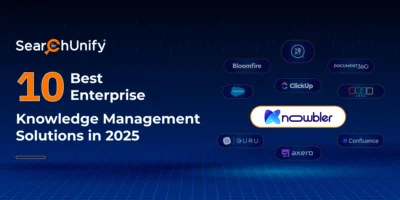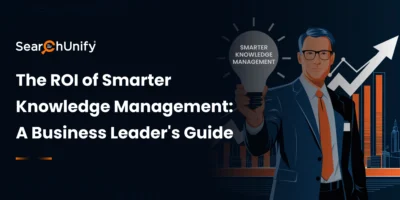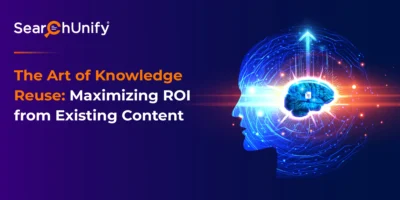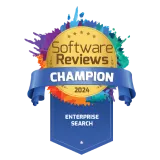
In this competitive landscape, knowledge is one of the most powerful weapons businesses can use to thrive. It’s the lifeblood of innovation, efficiency, and growth, yet it is often neglected.
Information is not readily available, and employees feel stuck reinventing wheels, reliving mistakes, and endlessly searching. Consequently, it hinders creativity, innovation, and organizational success.
However, with the advent of generative AI (GenAI), how organizations manage and leverage their knowledge base has been revolutionized. By unlocking the potential of existing information, organizations are transforming knowledge management into a dynamic and accessible resource.
Let’s explore how you can harness GenAI for your knowledge management use cases.
GenAI and Knowledge Management Lifecycle

Knowledge Sourcing
The initial phase of the knowledge management lifecycle is knowledge sourcing. This critical step involves identifying and gathering relevant information and insights from various sources to build a robust knowledge repository.
Historically, support agents have functioned as knowledge workers, generating knowledge by creating drafts against tickets and adding them to a knowledge backlog. This traditional approach is inherently limited and fails to account for the broader spectrum of customer interactions and potential knowledge gaps.
To create a comprehensive knowledge backlog, all customer touchpoints need to be considered. This includes analyzing data from self-service portals, community forums, and historical cases, as well as examining search queries that yield no results or no clicks. This thorough approach is crucial for identifying areas where knowledge is lacking and where new content should be developed.
However, synthesizing this vast and scattered information is daunting.This is where large language models (LLMs) come into play. LLMs are adept at topic clustering and can assist in visualizing knowledge base data through graphs that illustrate the relationship between customer cases and existing knowledge. The distance between points on these graphs indicates areas that require attention, guiding the creation of new knowledge base titles.
By leveraging LLMs, organizations can efficiently cluster and analyze data from multiple sources, including customer touchpoints that are often overlooked. This enables the creation of a highly optimized set of knowledge base titles that address the most pressing needs and gaps in the company’s knowledge repository.
Knowledge Generation
Some organizations use ChatGPT for knowledge generation. Throw some prompts in ChatGPT, and it’ll curate a knowledge article for you. Sounds cool, right?
But do you remember the Samsung use case, in which employees were banned from using ChatGPT when one member uploaded sensitive code for review?
Therefore, it’s crucial to ensure that the generated content is not just accurate but also based on the interactions at hand. At the same time, it is also paramount to emphasize security when creating content using interaction data.
The biggest concern when using a public or open-source LLM is the exposure to personal information. You may ask how. When PII isn’t masked, customer information could pass through unprotected systems.
Another issue is the potential inclusion of proprietary content in the training datasets of these large language model companies. If Google doesn’t already index the content you’re using, your proprietary information could become part of their datasets rather than remaining under your ownership. It underscores the need to carefully manage the data used in these models.
Knowledge Structuring
No team in an organization shares the exact same taxonomy, metatags, or content structure. So imagine how challenging it is to ensure that generated responses are based on end-users’ specific needs when you integrate different sources of information, each with a different taxonomy and vocabulary.
Additionally, LLMs require a significant amount of data to be labeled, a thoughtful approach to taxonomy, and clear guidelines to achieve accuracy and relevance in the generated answers.
Ironically, much of this work is still manual, which can often lead to errors and inconsistencies in the labeling of your content. Additionally, it’s a time-consuming and expensive process.
Yet, the potential of leveraging LLMs for structuring is immense. It is a powerful tool to categorize and label unstructured data and data with inconsistent terminology. It empowers you to deliver results that align with the unique workflow requirements of your customers, partners, or employees.
Therefore, knowledge structuring is not just a step in the knowledge management process but a critically important one. Once this foundational work is done, we can move on to the next crucial step of the knowledge management lifecycle: knowledge discovery.
Knowledge Discovery
Knowledge discovery is a process of finding specific information from multiple repositories that are personalized to the user’s maturity, context, and journey. However, adopting Chat GPT-like AI tools for knowledge discovery may lead to specific challenges:
These include:
- Limited contextual understanding in terms of business or customer-specific knowledge.
- Limited access to up-to-date information, potentially trained outdated information.
- Lack of access control
- Limited user personalization
Moreover, hallucination is another significant concern, where AI confidently generates incorrect results. Such a scenario creates confusion and can misguide users.
Wondering how to ensure that the knowledge provided is accurate, relevant, and secure? No worries! We’ve got you covered!
Here are two approaches to knowledge discovery:
- Fine-tuning the LLM
- Context Building with Retrieval Augmented Generation (RAG)
Fine-tuning the LLM
LLM’s fine-tuning is crucial to ensuring that it meets the specific requirements of a task. Fine-tuning involves various steps:
- Choose a pre-trained model to perform your tasks.
- Define the tasks, whether classification, entity extraction, or translation.
- Prepare the data.
- Choose a smart fine-tuning strategy and configure the model.
- Fine-tune the model and train it on specific tasks and data.
Moreover, this approach might not be beneficial when knowledge updates are dynamic and pose challenges.

However, the enterprise requires more aligned practice that addresses these concerns and can handle dynamic knowledge, such as the Retrieval-Augmented Generation (RAG).
Ready to take a step towards effective Knowledge Management?
Request a demo nowRetrieval Augmented Generation (RAG)
We call it the FRAG™ approach. FRAG™ stands for Federated Retrieval-Augmented Generation. This approach is quite different from fine-tuning. It smartly integrates data from diverse sources into the RAG pipeline.
With fine-tuning, LLMs might confidently pull the right information, which may not be accurate. In contrast, the FRAG™ framework operates with a high level of transparency. It uses a search mechanism to retrieve content and context, similar to what you might experience with a paid version of Chat GPT or Bing search, ensuring reliability.
This approach is highly flexible and can handle frequently updated content. It also allows for better control of security and personalization, as it respects source permissions and user profiles, giving you the confidence that it can adapt to your specific needs.

To learn more about FRAG™, a transformative framework, click here.
Knowledge Optimization
Knowledge optimization is the last step in the knowledge management lifecycle. Maintaining your knowledge repository’s health is crucial for knowledge optimization. This includes establishing clear content health standards for title accuracy, content uniqueness, link accuracy, metadata quality, and outdated content. Setting content health standards will make it easy to pinpoint gaps in your knowledge base and address them.
With the traditional approach, you’ve got to do a ton of work, but LLMs can help you improve content health. They can identify if the title is clear or ambiguous, the content is unique or duplicated, and the metadata is correct. You can take advantage of their linguistic capabilities from the outset.
Furthermore, LLMs can analyze multiple reports, compile actionable insights, and help knowledge workers determine what exactly needs to be done based on data-driven recommendations.
LLMs have diverse applications, one of which is summarizing feedback on knowledge articles. These tools can process large volumes of textual input and provide an overall sentiment, enabling knowledge workers to gain valuable insights into customer perceptions of their articles.
As we all know, LLMs raise security and privacy concerns, so it’s advisable to use in-house or private LLMs.
In addition to self-service analytics, it’s essential to consider how peers and agents use the knowledge base. Metrics such as link accuracy and agent usage can provide valuable feedback that completes the optimization loop, leading back to the sourcing stage of knowledge management.
Transform your Knowledge Management with the Right Technology and Strategy
Indeed, adopting a FRAG™ approach to knowledge management provides a strategic advantage in leveraging dynamic content within an organization. Additionally, by using search to define the context and context parameters for the LLM, this approach ensures that the generated content is accurate, free from hallucinations, and offers user access control.
But what if content doesn’t exist? You need to create it, but doing it manually would take ages. So what’s next?
Look no further—Knowbler, an LLM-powered product, is here to transform how your team creates, edits, and shares knowledge within their workflows.
With Knowbler, you can save time and focus on more important tasks, knowing that your knowledge management is in good hands.
To see how Knowbler can be a game-changer for knowledge management, request a demo now!














